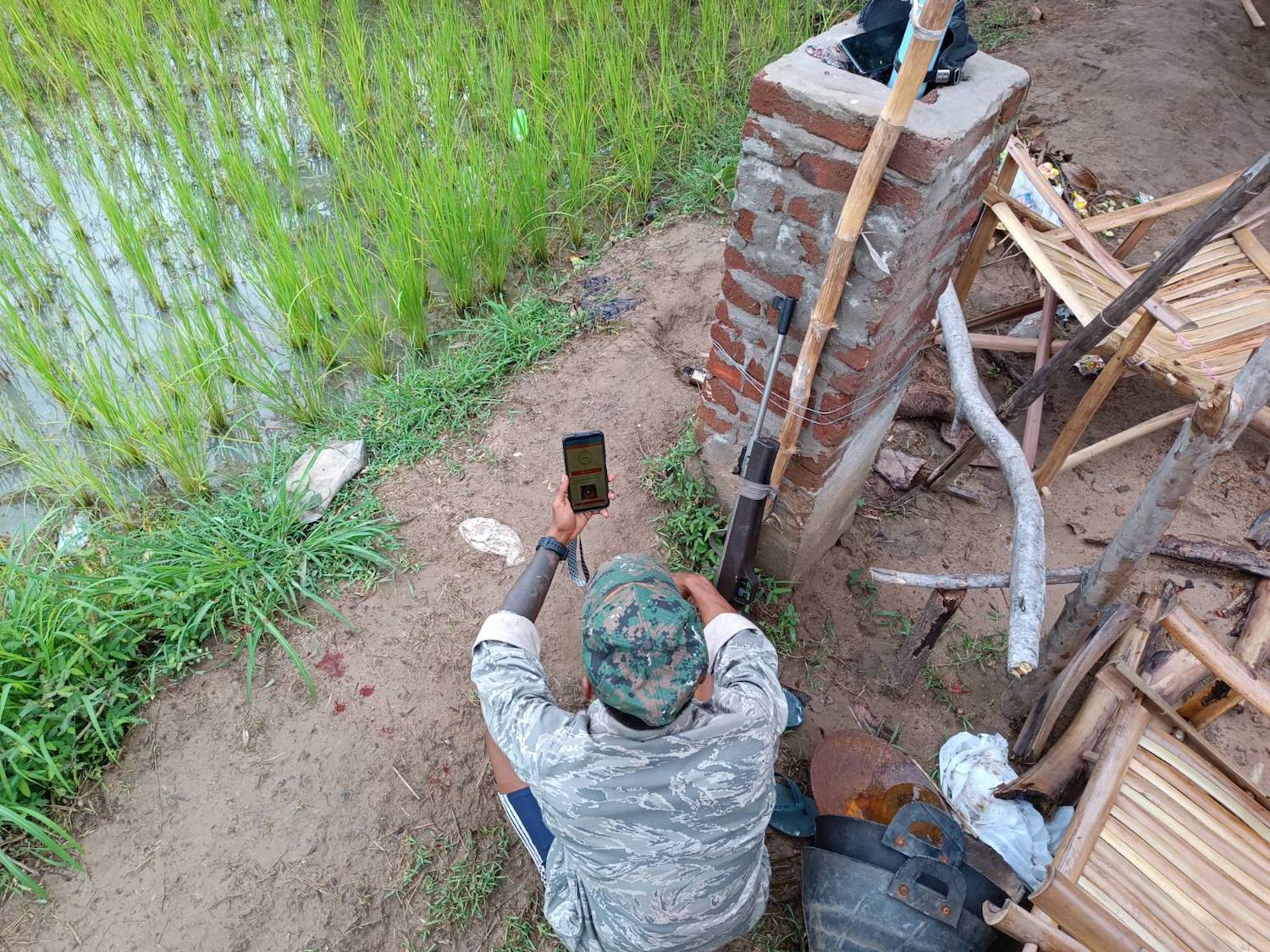

A man in Sagaing Region's Ayadaw Township, seen next to a homemade rifle, uploads news of the conflict, sidestepping an indefinite internet blackout in the region with the help of a hotspot connection from a phone suspended on a bamboo pole in 2022. (Supplied)
OPINION
By BRADLEY | FRONTIER
In Myanmar’s war zones, the internet is more than just a tool for communication – it’s a lifeline. Timely information about military raids and airstrikes can mean the difference between life and death. Internet access also allows citizens to inform the world about human rights violations or stay connected with family and friends.
However, accessing the internet is a real struggle in some parts of the country. The most well-known barrier is shutdowns imposed by the military junta as a counter-insurgency tactic. According to a Myanmar Internet Project database, there have been 291 internet shutdowns across the country since the February 2021 coup. Eighty out of the 330 townships in Myanmar are now completely cut off.
Infrastructure damage from the conflict is also a major factor, particularly as resistance groups try to disrupt regime operations and businesses. State media reported that in 2021 alone, members of the resistance destroyed more than 400 cell towers, most of them operated by the partly military owned company Mytel. Financial, technical and logistical challenges also hinder the restoration of communication infrastructure in areas taken over by resistance armies.
Alternative communication technologies have therefore become vital for accessing and disseminating critical information. Long-range mesh networking devices are frequently used in displaced persons’ camps and hospitals, while range extenders are used to expand poor-quality 2G connections. Organisations with more money, meanwhile, use geostationary orbit satellite internet solutions such as Inmarsat, IPSTAR and Thuraya. Starlink, a cheaper low Earth orbit solution, is currently the most popular satellite communication service for both organisations and individuals.
Each alternative communication method, however, has its own advantages and drawbacks, which I discuss below.
Although a well-established technology, walkie-talkies have become expensive in Myanmar. They were only K100,000 or less before the coup, but now cost about K800,000 (or US$170 at the current market exchange rate) due to high demand and legal restrictions.
The use of such hand-held transceivers is tightly restricted under the provisions of the colonial-era Telegraph Act of 1885 and Wireless Telegraph Act of 1934. State Counsellor Aung San Suu Kyi was sentenced to two years’ imprisonment soon after the military takeover for possessing such handsets.
While still cheaper than many other options, walkie-talkies also have fewer features and capabilities compared to smartphones and fourth-generation cellular technology. Walkie-talkie technology is not designed to be secure and is vulnerable to interception. These vulnerabilities and the legal risks, coupled with the ever-increasing price relative to their usefulness, make walkie-talkies impractical for most civilians.
LoRa (short for Long Range) is a networking technology originally used on offshore oil rigs and other remote locations, and in post-disaster situations. It can connect small devices like sensors, trackers and small computer boards over long distances while using very little power.
LoRa devices provide an innovative workaround in off-grid areas but have firm limitations. Their batteries last only 24-26 hours on standby, so running these devices continuously requires a dedicated power source. Securing one is not easy when many areas of Myanmar are denied electricity from the national grid.
Another problem is the bandwidth. Only 256 bytes of text messages (three sentences in English, or one-and-a-half sentences in Burmese Unicode) can be communicated through these devices. The technology, therefore, cannot support multimedia and file transfer.
However, LoRa is a technology in its infancy and is rapidly evolving with the help of a strong global community of developers, meaning some of these shortcomings could be overcome in time.